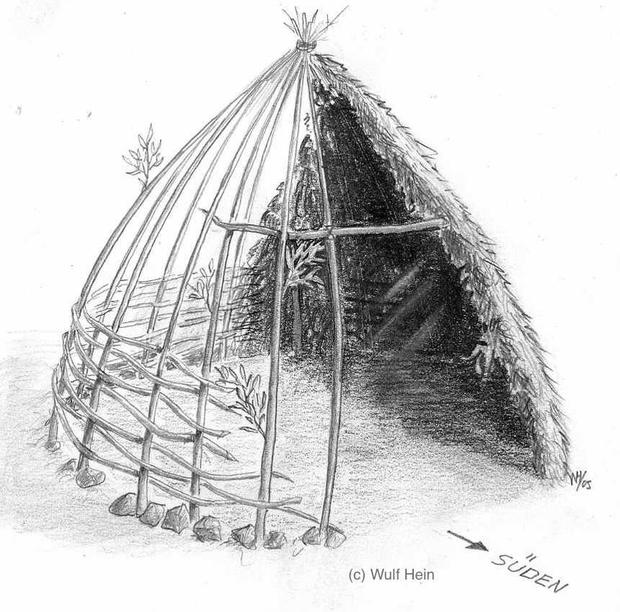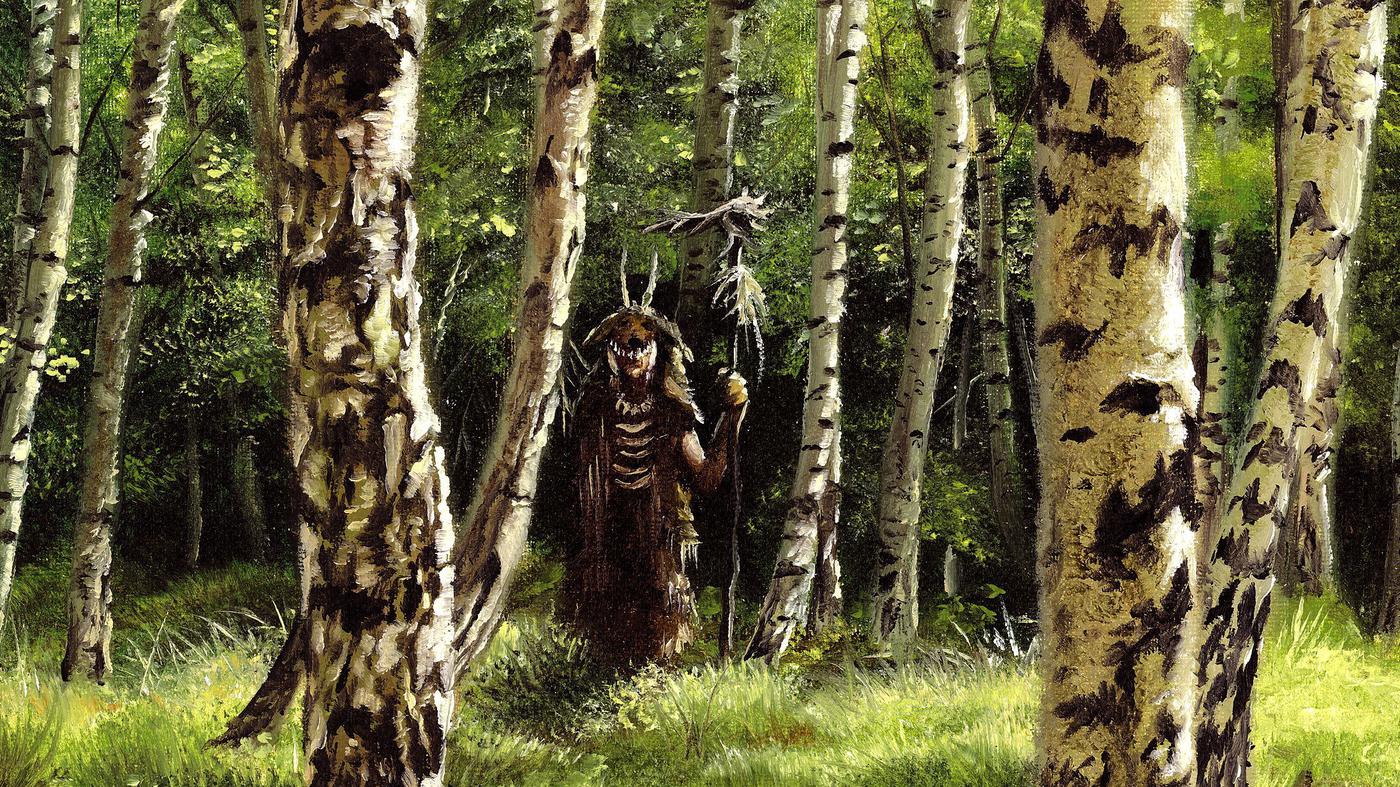Life in the Mesolithic was a nightmare for allergy sufferers. When giant glaciers melted in the last Ice Age about 12,000 years ago, a dense primeval forest spread across Europe that was never to be seen again. Everywhere bloomed birches, poplars, willows – and, of course, hazelnuts. Their fruits were a valuable staple food at that time. “Some say we wouldn’t exist without hazelnuts,” says Antje Welton.
New Mesolithic World
The linguist from Freie Universität Berlin investigates how people behave in historical settings. On weekends, Long Night of Science takes visitors on a thrilling journey back to the Mesolithic Age.
As part of a unique interdisciplinary citizen science project, prehistoric huts are being built on campus and activities on site are video documented. Anyone interested can participate. The researcher directs her attention above all to how the participants interact with each other, what conversations they have and how they deal with unfamiliar things.
Mesolithic world, about 10,000 to 5,000 years BC. BC, where not only flora and fauna but also living conditions changed drastically, ideal for such an experiment. On the other hand, because people then developed new shelters, tools and hunting methods that made their diet more diverse. On the other hand, Wilton also finds early date rooms very remarkable because they are often sparsely occupied. “The more we look back into the past, the fewer physical traces we find.” Since there is no written evidence, archaeological finds must be supplemented with reasonable conclusions. “And often with a little imagination,” says Welton.
Prehistoric huts and tools
For example, for a long time it was a mystery how Mesolithic people cut trees and processed wood for their huts. Angie Wilton holds the answer in her hands. “Such an ax made of deer antlers was ideally suited for this,” says the scientist. It is true that complete Mesolithic dwellings cannot be found in archaeological finds. However, it is possible to distinguish the floor plans from the sawing holes and flint blades scattered throughout the interior. In addition to the round, there were also oval and trapezoidal buildings.

Today it is often not clear what material the individual facilities are made of. “We’ll use delicate hazel stalks, make our own twine, and then weave the walls out of freshly harvested hazelnut and willow branches,” explains Wilton. The construction is directed by experts in archeology, a discipline that deals with reconstructing the craft techniques of the past. Otherwise, only materials that are largely proven at that time are used.

A particularly beautiful example is the containers made of tree bark. A similar specimen from 10,000 years ago was found at the bottom of a watering hole in Fresac, Haviland. “Tree bark is a very flexible and water-repellent material,” says Wilton. No wonder people of the Stone Age also made mats for their huts from it.
in unknown territory
A look into prehistory should provide new insights. “We want to explore how we embrace routines we don’t have in our daily lives while treading into unfamiliar territory and seeing how we can unlock the past together,” explains Wilton. You find it particularly exciting that there are negotiations and arguments sometimes.
At the latest when the fire is lit together, the braces should be leveled again. Then the hazelnuts are also roasted, just as in the old days, in the hot sand. “It’s fast and tastes delicious,” says Antje Wilton. Only people with allergies should avoid this item on the program.

“Total coffee aficionado. Travel buff. Music ninja. Bacon nerd. Beeraholic.”







More Stories
Primatologist Goodall visits Salzkammergut
Cancer from a full time job? The study suggests connection
Stunning video recording of Comet Tsuchenshan over the Ron-Ron Channel